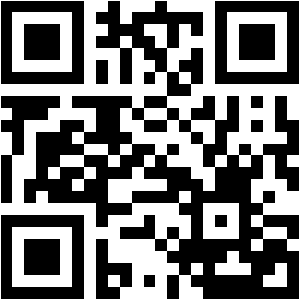BAMS1743: Jan-2024- Quantitative Methods, Assignment , TAR UMT, Malaysia
| University | Tunku Abdul Rahman University of Management and Technology (TAR UMT) |
| Subject | BAMS1743: Jan-2024- Quantitative Methods |
Question 1
The following frequency distribution shows the monthly spending amounts of 60 randomly chosen users of a popular e-wallet app.

a) State the variable of interest. Indicate whether this variable is a quantitative discrete, quantitative continuous, or qualitative variable.
b) Draw a “less than” ogive according to the data above.
c) Use the “less than” ogive to estimate
(i) the median and interpret your result.
(ii) the monthly spending exceeded by 30% of the users.
(iii) the quartile deviation.
d) Calculate the mean and the standard deviation of the above data.
Question 2
a) In a night market, it was found that 60% of the customers are below 40 years old. Of the customers who are below 40 years old, 80% of them used e-wallet for payment. Of the customers who are 40 years old and above, 30% of them used e-wallet for payment.
(i) Draw a well-labelled probability tree diagram with the joint probabilities calculated to illustrate this situation.
(ii) From the probability tree diagram, find the probability that a randomly selected customer
(1) used e-wallet for payment;
(2) is 40 years old and above given that the customer used e-wallet for payment;
(3) used e-wallet or below 40 years old.
b) A record shows that 60% of the customers used e-wallet for payment in a night market. If 10 customers are chosen randomly, calculate the probability that 3 or 4 customers used e-wallet for payment.
c) In a night market, the average number of customers who used e-wallet for payment is 3 in every 10 minutes. Assume that the number of customers who used e-wallet for payment follows a Poisson distribution, find the probability that none of the customers used e-wallet for payment in 20 minutes.
d) The amount of e-wallet payment made by the customers in a night market store is normally distributed with a mean of RM 20 and a standard deviation of RM 2.50.
(i) Find the probability that a randomly selected customer pays less than RM 22 via ewallet payment.
(ii) 15% of the customers pay more than RM a via e-wallet payment. Find the value of a.
Question 3
a) A researcher wishes to know whether the sales of the stores are depending on the number of e-wallet channels made available to the customers. The following table shows the number of e-wallet channels and the sales achieved by 8 stores last week.

(i) Calculate the product moment correlation coefficient.
(ii) Find the least squares regression equation of the sales on e-wallet channels.
(iii) By using the regression equation, estimate the sales of a store if the number of e-wallet channels available is ten.
b) The customers’ payment made by various e-wallet channels in a store over the past three weeks are given below:

(i) Obtain a suitable moving average trend.
(ii) Calculate the average seasonal variations for the customers’ payment via e-wallet using the additive model.
(iii) Forecast the customers’ payment via e-wallet for Friday of the following week.
Question 4
a) A study is conducted on the usage of a popular e-wallet application according to the age groups and e-wallet adoption of 160 respondents as shown in the following contingency table.

(i) By using the chi-square test, test at 5% significance level whether there is any relationship between the age groups and e-wallet adoption.
(ii) Find the 98% confidence interval for the population proportion of respondents who are non e-wallet users.
b) Joshua decided to save money for future e-wallet expenses. He planned to make regular contributions into the e-wallet account at every end of the month. He contributed RM 200 to the e-wallet account for 2 years. Assuming the interest rate is 0.6% per annum compounded monthly. Calculate
(i) the effective annual rate (EAR);
(ii) the future value of his e-wallet savings after 2 years.
c) Aunty Mary is considering an investment in an e-wallet startup which requires an initial investment of RM 100,000. The projected cash flows are as follows:

Given the discount rate for this investment opportunity is 8% per annum, calculate the Net Present Value (NPV) of the e-wallet investment project. Comment if it is worthwhile for Aunty Mary to invest in this project.
Get Help By Expert
Recent Solved Questions
- Service Marketing Assignment, SU, Malaysia To become more aware of critical aspects of the service encounter from a customer’s perspective
- MKT60404: Services Marketing Assignment, TU, Malaysia You are required to select an experience (a series of service encounters) when visiting a service organisation by choosing any ONE company
- Global Business Strategy Assignment, MUM, Malaysia Aggressive competition among competitors in one industry may lead to a lose-lose situation which in the long run jeopardizes
- Marketing Assignment, UNM, Malaysia Classify firms according to the 4 different roles they might play leader, challenger, follower, and niche
- BKAN1013 Basic Accounting Assignment, UUM, Malaysia Gurkha Consultancy Sdn Bhd is a company that provides consultation to entrepreneurs
- Physics Assignment, UOW, Malaysia When a capacitor is charged through a resistor by a constant voltage source, the voltages across the capacitor
- Guidance and Counselling Essay, MSU, Malaysia Prepare an essay regarding behaviourist counselling as one of the prominent techniques in counselling
- BSL305: Company Law Assignment, MU, Malaysia In order to obtain the funds necessary to expand its business, Capital Ltd will undertake a $12M capital raising
- MPHR7113 Assignment 1: Marketing Management IKEA Malaysia Retention Strategy – City University Malaysia
- BBGO4103: Organisational Behaviour Assignment, OUM, Malaysia Share an issue of organizational behavior in your workplace. ‘People’s job performance decreases as they age



